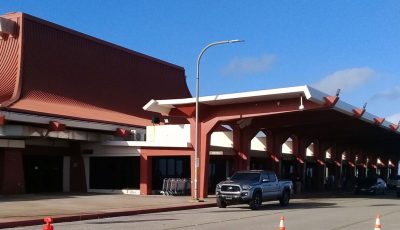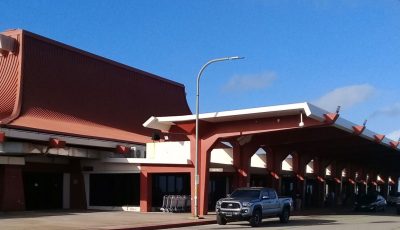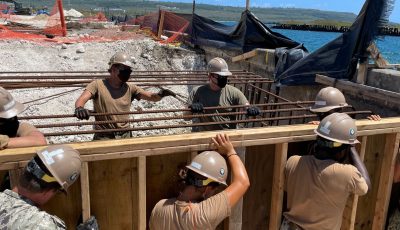Inos, CPA seek solutions to resolve shipping woes on Rota
To remedy the shipping woes on Rota, Gov. Eloy S. Inos meet with officials of the Commonwealth Ports Authority last week to seek its views on the integrity of the island’s harbor.
CPA executive director MaryAnn Lizama told Saipan Tribune that the March 26 meeting centered on seeking solutions to the long-time shipping concerns on the island that have on numerous occasions caused a crisis for its people.
The government recently placed Rota under an “emergency declaration” following a shortage of basic commodities and supplies due to the lack of cargoes being delivered to the island. Shippers have blamed bad weather for their inability to dock on Rota. To provide relief, the Office of the Governor declared Rota’s East Harbor as an “emergency alternative port” during bad weather.
Lizama disclosed that the governor specifically inquired about the integrity and capacity of the “emergency alternative port,” which Lizama hinted is unknown at this time.
CPA’s official point of entry on Rota is the West Harbor, but bad weather usually prevents vessels from docking at this harbor. Local officials on the island have tossed the idea of developing the East Harbor and an independent study has been commissioned to check if this is feasible.
It was learned that the West Harbor’s channel has limited capability and cannot accommodate vessels longer than 235 feet. The only way for the port to be able to accommodate bigger vessels is by widening its channel opening.
The area identified for the proposed East Harbor is not CPA property but public land.
Lizama assured that CPA supports the idea of using the East Harbor as an “emergency alternative port” as it doesn’t want to deny the people of Rota their supply of commodities.
“We have no choice, because we don’t want to deny the Rota community the commodities that they need. But as to the integrity of the said harbor, we don’t know yet,” she told Saipan Tribune.
Lizama said that she informed the governor that CPA will seek guidance from the U.S. Coast Guard to determine the integrity and capacity of the proposed East Harbor. She pointed out that the capacity of the pier itself to hold “heavy equipment” must be established.
CPA had maintained its position to upgrade and expand the existing West Harbor and is, in fact, in the process of commissioning a separate study for this. The U.S. Coast Guard had already approached CPA-Rota and offered its help to do this study at no cost to the ports authority. It is estimated that the feasibility study for the West Harbor upgrading will cost about $400,000, which requires a 50-50 match.
The CPA management and its board earlier opposed the idea of building a new port on Rota. For CPA, any funds for harbor development must first be used for the West Harbor, the “existing and active” ports handled by the agency.
Developing the existing harbor is estimated to cost $16 million to $19 million. Once the feasibility study is completed, the agency will look for federal grants and locally sourced funds, including untapped CIP monies to implement the project.



























